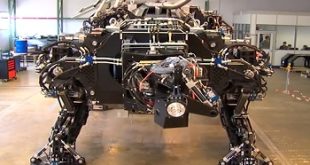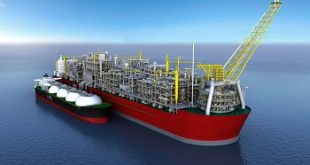Among the tremendous machines designed to reshape our planet’s surface, the massive bucket wheel excavator (BWE) stands as a fantastic instance of engineering prowess.
These giant machines, particularly used in mining and large-scale earthmoving projects, are succesful of tearing via considerable portions of earth with an effectivity that defies imagination. This article explores the history, design, operation, and affect of the large bucket wheel excavator, revealing how it transforms landscapes and powers industries worldwide.
Historical Background
Origins and Evolution
The thought of the bucket wheel excavator dates returned to the late nineteenth century, at first developed for dredging and small-scale mining. The first bucket wheel excavators had been exceedingly modest in measurement and functionality in contrast to the giants of today.
Over the decades, technological developments and the growing demand for uncooked substances spurred the improvement of extra effective and large machines.
Milestones in Development
One of the most extensive milestones in the evolution of BWEs used to be the introduction of the large-scale fashions in the mid-20th century.
These machines had been designed to manage the large overburden elimination required in open-pit coal mining operations. German industrial organizations like Krupp (now ThyssenKrupp) grew to become pioneers in the manufacture of these behemoths, putting the fashionable for cutting-edge BWEs.
Design and Structure
Size and Scale
Giant bucket wheel excavators are amongst the biggest land automobiles ever constructed. The Bagger 293, for example, holds the Guinness World Record for the biggest terrestrial vehicle, standing ninety six meters tall, 225 meters long, and weighing 14,200 tons. Its bucket wheel on my own has a diameter of over 20 meters, geared up with 18 buckets, every succesful of retaining extra than 6 cubic meters of material.
Mechanical Components
A BWE consists of numerous key components:
– **Bucket Wheel**: The most distinct feature, this huge wheel rotates to scoop up earth and rock.
– **Boom**: Attached to the wheel, the increase extends the attain of the excavator.
– **Superstructure**: Houses the equipment and gives a platform for the growth and bucket wheel.
– **Crawlers or Walking Mechanism**: Enables the laptop to pass throughout the mining site.
– **Conveyor Belts**: Integrated structures that transport the excavated fabric from the bucket wheel to storage areas or processing facilities.
Power and Control Systems
Modern BWEs are powered via a aggregate of electric powered and hydraulic systems. They require vast power, frequently linked at once to high-voltage strength lines, making sure non-stop and environment friendly operation. Advanced manipulate structures and automation applied sciences permit unique maneuvering and operation, frequently managed from far off stations to beautify protection and efficiency.
Operation and Functionality
Excavation Process
The important characteristic of a BWE is to cast off giant portions of overburden – the soil and rock covering precious minerals – in mining operations. The excavation manner entails the non-stop rotation of the bucket wheel, which scoops fabric as it turns. The growth and superstructure swing in a huge arc, permitting the desktop to cowl widespread areas barring wanting to reposition frequently.
Material Handling
Once the fabric is excavated, it is transported by means of a collection of conveyor belts built-in into the BWE. These belts raise the fabric to the rear of the machine,
the place it is both deposited into massive trucks, positioned on secondary conveyor systems, or stockpiled for later processing. This non-stop coping with gadget minimizes downtime and maximizes productivity.
Efficiency and Output
The sheer scale and energy of BWEs allow them to pass tens of millions of cubic meters of cloth annually. Their effectivity in managing overburden makes them vital in large-scale mining operations, lowering the want for a couple of smaller machines and streamlining the excavation process.
Environmental and Economic Impact
Economic Benefits
BWEs supply huge monetary advantages to the mining industry. Their capability to swiftly do away with overburden and get admission to mineral deposits lowers operational expenses and will increase the profitability of mining projects.
The economies of scale completed with BWEs imply that giant deposits can be exploited greater efficiently, making sure a consistent furnish of uncooked substances for a number of industries.
Environmental Concerns
Despite their financial advantages, BWEs pose huge environmental challenges. The great land disruption brought about by way of these machines can lead to habitat destruction, soil erosion, and panorama alteration. The mining sites, regularly sizeable and barren after excavation, require great reclamation efforts to restoration ecological balance.
Mitigation Strategies
To tackle the environmental impact, mining groups and regulatory our bodies are imposing numerous mitigation strategies. These consist of land reclamation projects, the place mined land is rehabilitated to guide vegetation and wildlife,
and stricter rules on mining practices to reduce ecological damage. Additionally, developments in mining technological know-how purpose to minimize the environmental footprint of BWEs, such as extra environment friendly power use and expanded waste administration systems.
Technological Advancements
Automation and Remote Operation
Recent technological developments have targeted on growing the automation and far off operation abilities of BWEs. Automation enhances precision and safety, decreasing the reliance on human operators and permitting for 24/7 operation. Remote manipulate structures allow operators to manipulate the excavator from a protected distance, enhancing working prerequisites and lowering the threat of accidents.
Enhanced Efficiency
Innovations in fabric sciences and engineering have led to the improvement of greater durable and environment friendly factors for BWEs. Improved bucket designs, greater strong conveyor belts, and superior wear-resistant substances make a contribution to longer operational lifespans and decreased upkeep costs.
Integration with Digital Technologies
The integration of digital technologies, such as IoT (Internet of Things) sensors and statistics analytics, is remodeling the way BWEs operate. Real-time monitoring of computing device performance, predictive maintenance, and optimization algorithms make certain that the excavators function at top efficiency, minimizing downtime and maximizing output.
Case Studies and Notable Examples
Bagger 293
The Bagger 293 is possibly the most iconic BWE, symbolizing the intense scale and functionality of these machines. Used specifically in the Garzweiler lignite mine in Germany, the Bagger 293 can go up to 240,000 cubic meters of overburden daily. Its measurement and effectivity have made it a quintessential asset in the strength industry, imparting a dependable source of coal for energy generation.
Other Significant BWEs
Other incredible examples consist of the Bagger 288 and the TAKRAF SRs 8000, every contributing to sizable mining tasks round the world. These machines illustrate the various purposes and substantial skills of BWEs in extracting precious sources from the earth.
Future Prospects
Sustainable Mining Practices
As the world strikes closer to greater sustainable practices, the future of BWEs will possibly contain improvements aimed at decreasing their environmental impact. This ought to encompass the improvement of greater energy-efficient systems, the use of renewable electricity sources, and superior reclamation strategies to mitigate the ecological footprint of mining activities.
Continued Technological Innovation
Ongoing lookup and improvement in robotics, AI, and substances science will proceed to beautify the abilities of BWEs. The center of attention will be on enhancing efficiency, lowering operational costs, and making sure that these machines continue to be at the forefront of mining technology.
Conclusion
The large bucket wheel excavator is a surprise of cutting-edge engineering, succesful of remodeling landscapes and powering industries with its considerable potential for earthmoving. While their financial advantages are undeniable, the environmental challenges they pose require cautious administration and modern solutions.
As science continues to evolve, so too will the competencies and sustainability of these gigantic machines, making sure that they stay imperative to the future of mining and large-scale excavation projects. The BWE’s capability to tear the floor to shreds, metaphorically speaking, signifies its unmatched electricity and fundamental position in our industrial world.
 Thai Lottery 2024
Thai Lottery 2024


